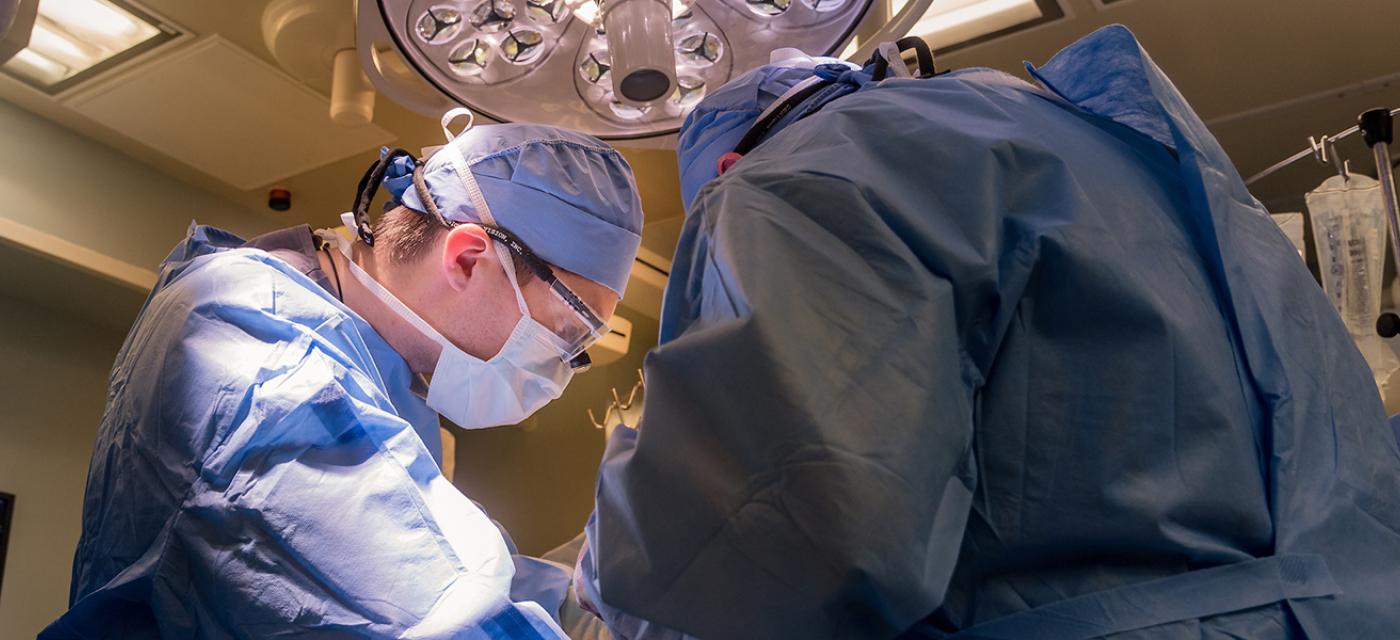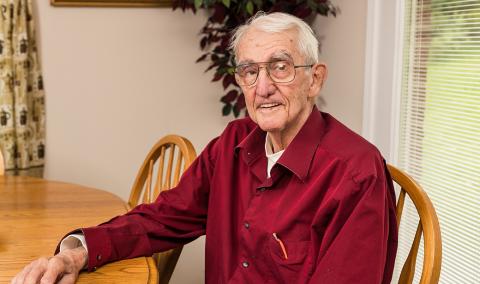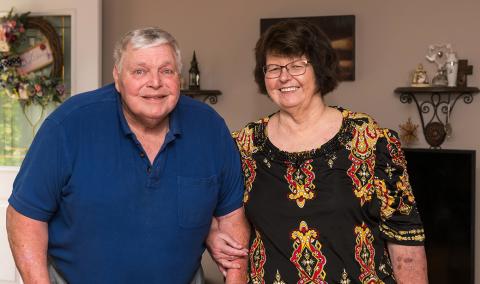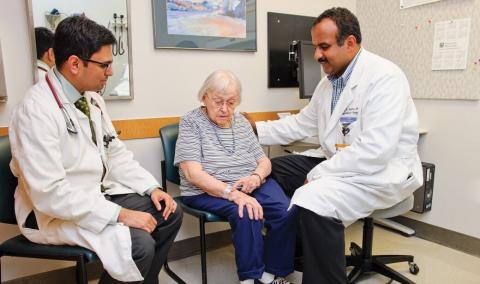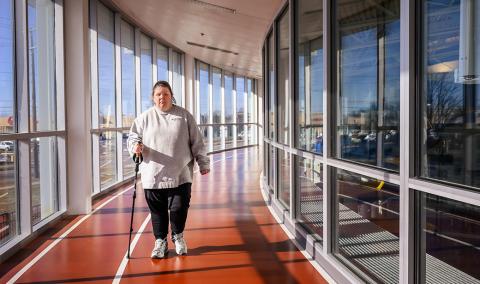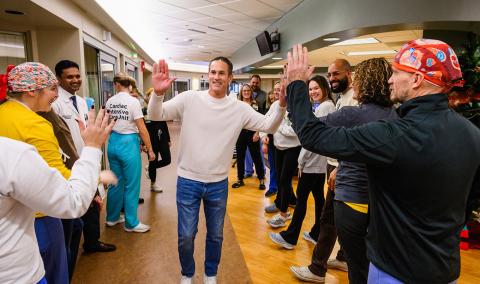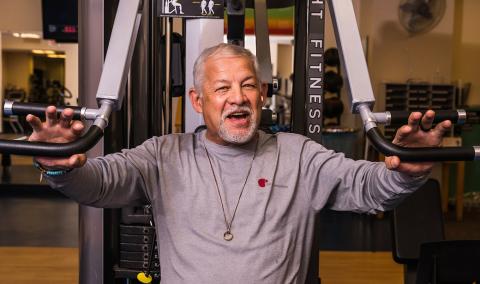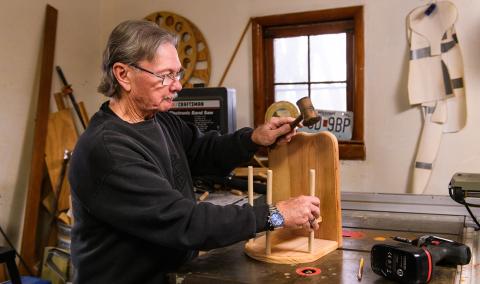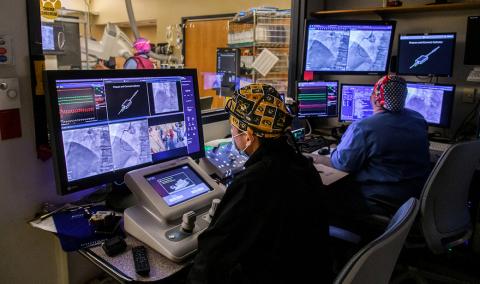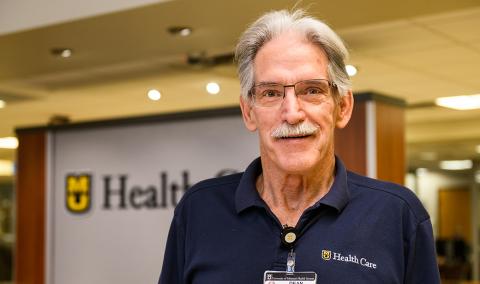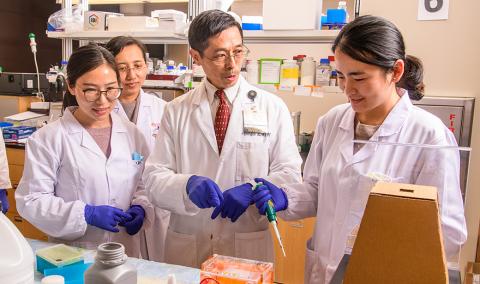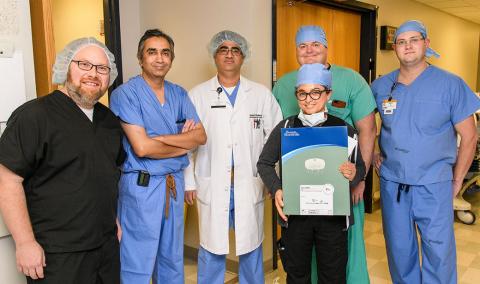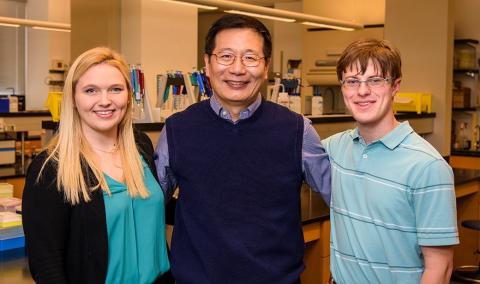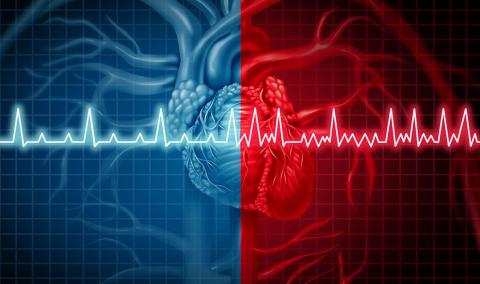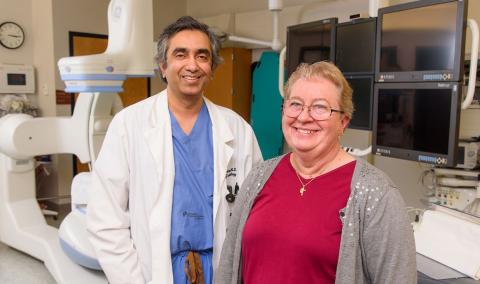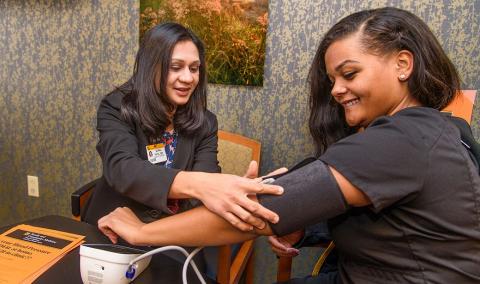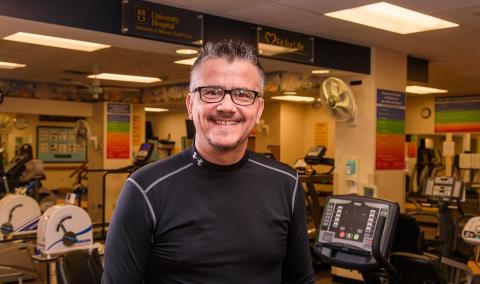Your aorta is the main artery that circulates blood from your heart down into your legs. Sometimes, the wall of the aorta becomes weak, ballooning out to form an aneurysm.
Our providers specialize in complex treatment of all aortic diseases and work together in a multidisciplinary approach. As one of our patients, you have access to the latest techniques, research and clinical trials in order to provide the best approach for you. In our advanced hybrid operating room, we treat all aortic diseases, including thoracic and abdominal aortic aneurysms, aortic dissections and other aortic emergencies such as ruptured aortic aneurysms.
Risk factors and screening

Abdominal aortic aneurysms can occur in anyone but are more likely in certain groups of people. They are usually caused by hardening of arteries (atherosclerosis) that occurs with aging or by unhealthy behaviors, such as smoking. In rare cases, genetic conditions, infections or injuries can also cause aneurysms.
To screen for aneurysms, MU Health Care physicians use safe, radiation-free ultrasound technology to examine your abdomen. This noninvasive screening allows your physician to spot and measure any bulges in your aorta.
Surgical options
We offer the following minimally invasive and open vascular approaches:
Minimally invasive stent-graft procedures
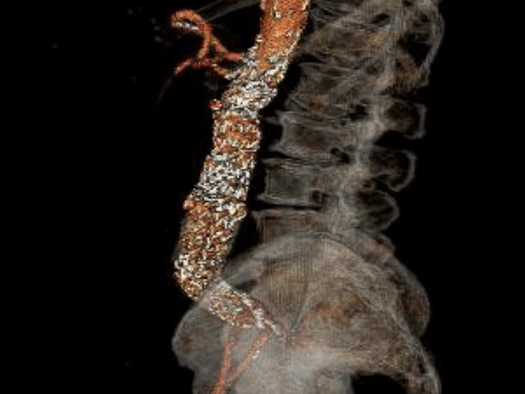
Endovascular aneurysm repair (EVAR)
EVAR is a minimally invasive procedure to repair abdominal aortic aneurysms; it is an alternative to having major open surgery. This standard procedure is typically effective for most patients. There are variations on the EVAR procedure based on the location of the aneurysm.
- Thoracic aortic endovascular repair (TEVAR): Treatment for aortic aneurysms of the chest.
- Abdominal aortic endovascular repair (EVAR): Treatment for aortic aneurysms of the abdomen.
- Fenestrated aortic endovascular repair (FEVAR): Treatment for complex aortic aneurysms involving kidney and intestinal arteries.
- Chimney and Snorkel endovascular repair (Ch-EVAR): Treatment for complex aortic aneurysms involving kidney and intestinal arteries.
- In cases where an aneurysm grows above what was repaired, a newer procedure known as Snorkel-EVAR is used to for someone with complex aortic disease. Through this technique, doctors are able to extend the stent a bit higher to seal off the aneurysm. It is also referred to as chimney-EVAR.
After the procedure is complete, patients recover overnight in the hospital and are usually discharged the next day. The overall recovery time is minimal, and most patients are back to normal activity by the two-week point after surgery.
Iliac branched device (IBD) repairs
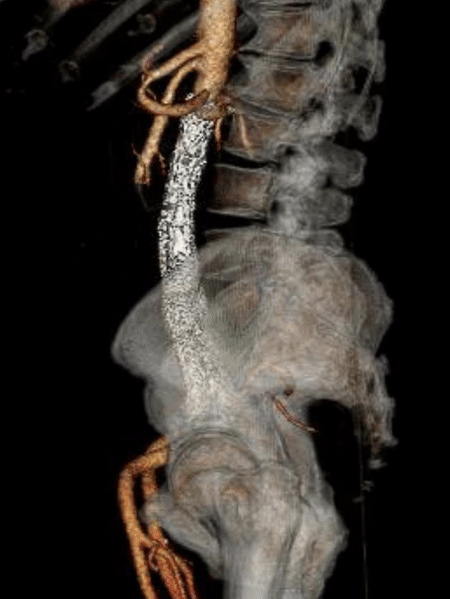
IBD repairs typically are performed when the bulging aneurysm involves the aorta, the main blood vessel of the body and the iliac arteries in the pelvis.
Previously, the standard approach to repair these kinds of aneurysms involved blocking off the flow to one of the arteries to the pelvis and covering the aneurysm with an aortic stent-graft. This would sometimes lead to cramping or reduced blood flow in the pelvic region.
IBD repairs spare the artery to the pelvis, allowing the treatment of both aneurysms of the aorta and the iliac (pelvic) artery without the need to block off the pelvic artery. Patients do not have to worry about possible cramping because blood flow is maintained.
IBDs are placed via small incisions in both groins and are delivered through the femoral arteries. The device is opened within the artery itself allowing the aneurysm to be covered and repaired without the need for open surgery. The entire procedure takes two to three hours.
After the procedure is finished, patients recover overnight in the hospital. Typically, they are discharged the following day. Total recovery time is minimal, and most patients are back to unrestricted normal activity around two to four weeks after surgery.
Learn more about Heart & Vascular Care at MU Health Care.
Related Conditions & Treatments
- Aortic Disease Care
- Atrial Fibrillation (AFib) and Arrhythmia
- Carotid Artery Disease
- Chest Pain
- Chronic Total Occlusion (CTO)
- Congenital Heart Disease
- Coronary Artery Disease
- Cardiothoracic Surgery
- ECMO Heart and Lung Life Support
- Heart Attack
- Congestive Heart Failure
- Heart Valve Disease
- Pediatric Cardiology
- Pediatric Vascular Anomalies
- Peripheral Artery Disease (PAD)
- Structural Heart Program
- Transcatheter Aortic Valve Replacement (TAVR)
- Vascular Surgery
- Women's Heart Health



